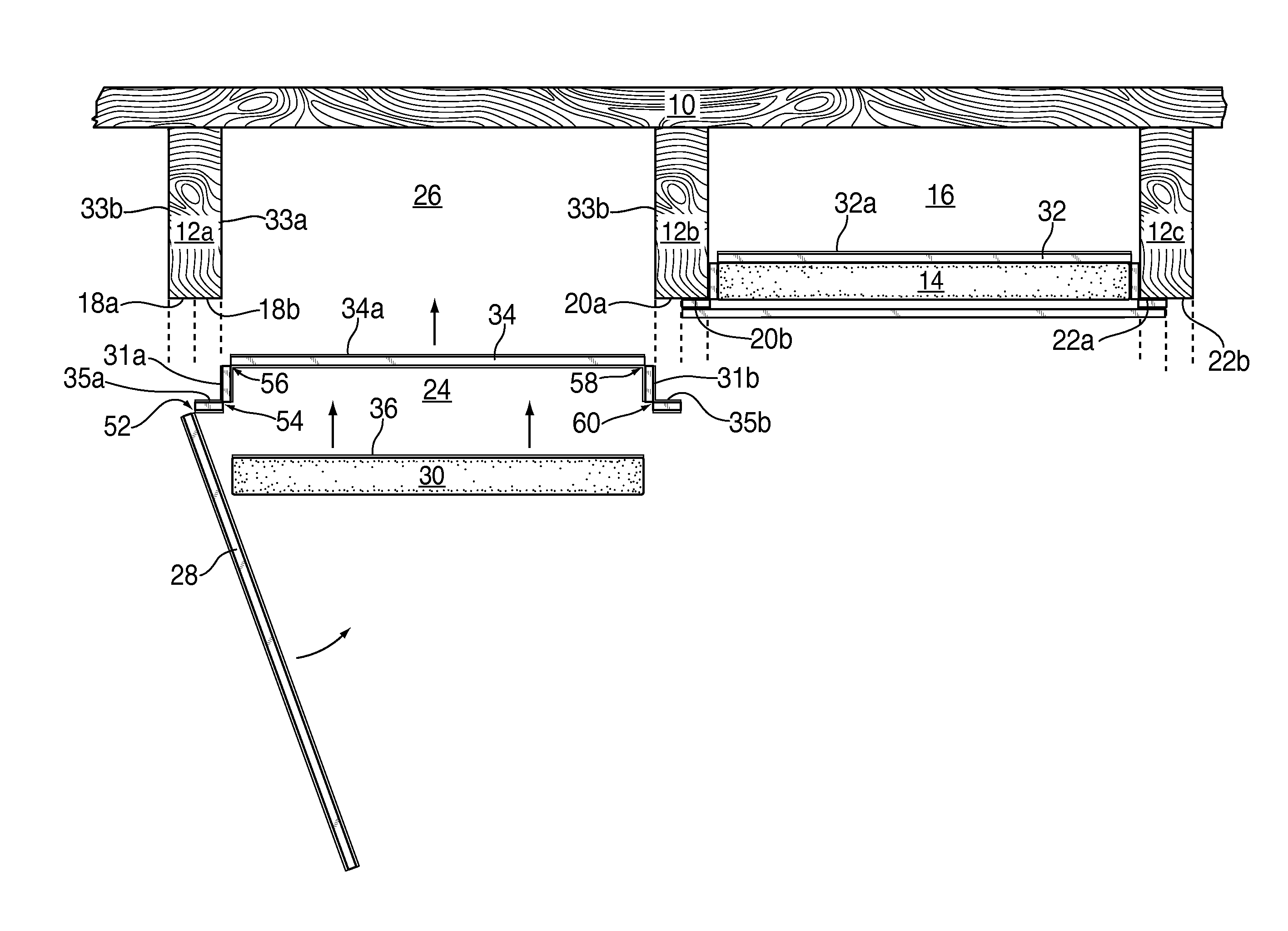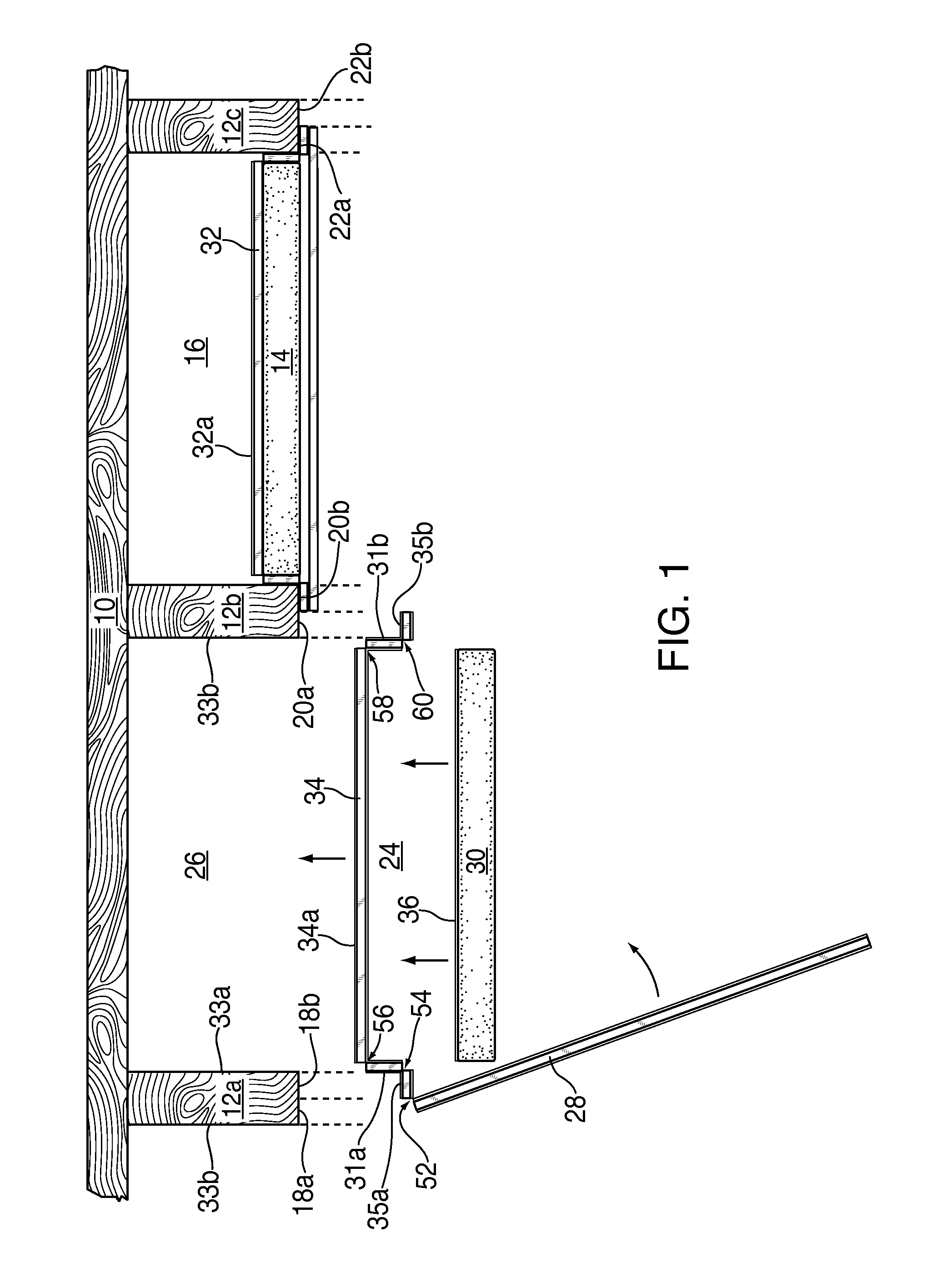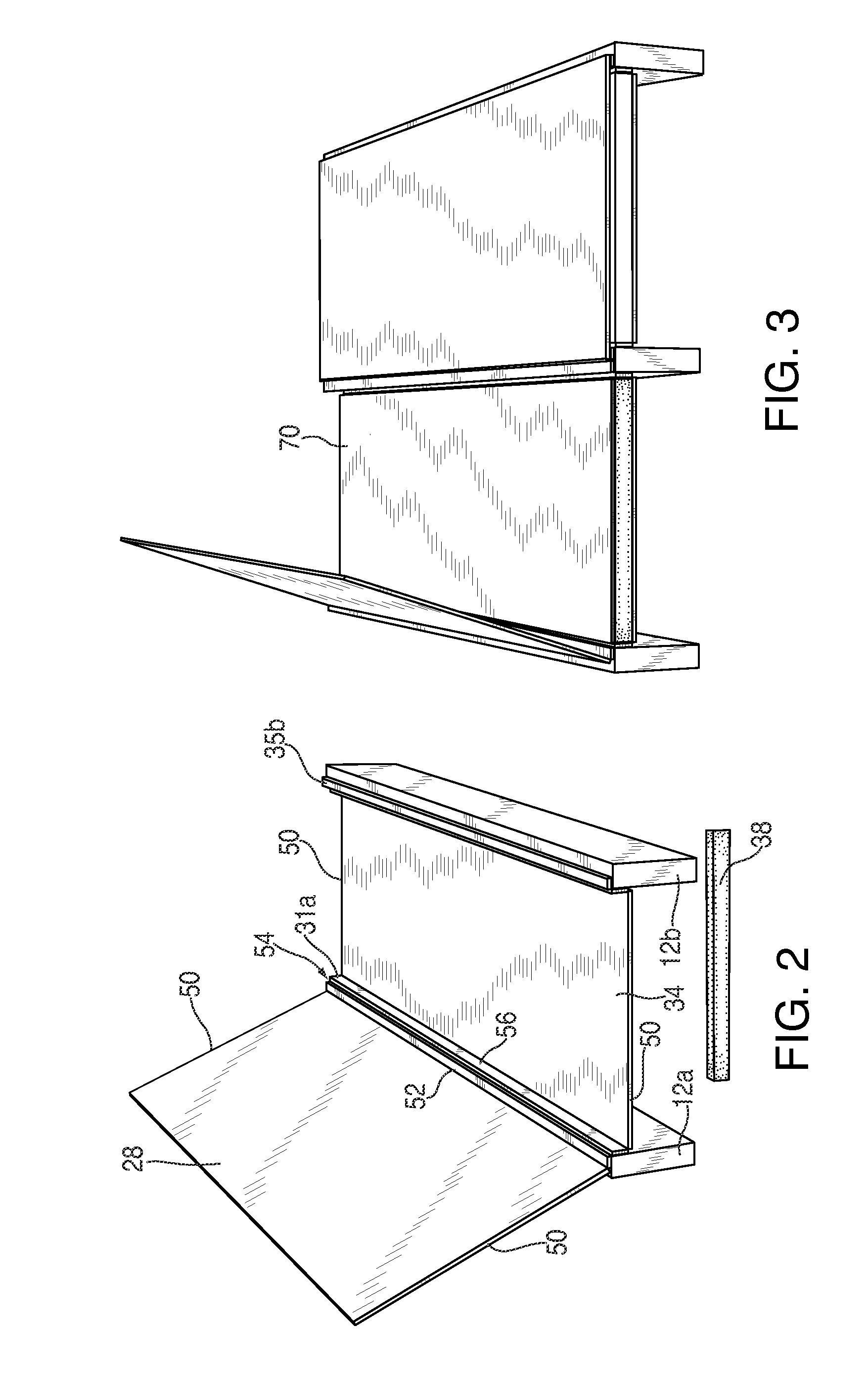Radiant thermal barrier
a technology of radiant barrier and thermal barrier, which is applied in the direction of heat-proofing, mechanical equipment, roofing, etc., can solve the problems of difficult to judge the proper amount of insertion of insulation and the change in effectiveness of radiant barrier, and achieve the effect of convenient installation
- Summary
- Abstract
- Description
- Claims
- Application Information
AI Technical Summary
Benefits of technology
Problems solved by technology
Method used
Image
Examples
Embodiment Construction
[0028]Reference numeral 10 of FIG. 1 shows a sectional view of a floor, ceiling, wall, or roof of a building supported by a plurality of joists 12a, 12b, 12c.
[0029]A hat-shaped thermal barrier assembly 14 is shown inserted as a barrier to thermal radiation from e.g. above the floor 10 and conducted through the floor into a space 16 between these joists or studs 12b, 12c in such a way that the thermal barrier assembly completely covers the space 16 while also covering a half portion 20b, 22a of edge faces of the joists or studs 12b, 12c. Each edge face comprises two half portions 20a, 20b extending longitudinally along the length of the edge face of the joist, i.e., in a direction perpendicular to the drawing sheet.
[0030]On the left hand side of FIG. 1 a thermal barrier assembly 24 is shown during the assembly process, after having been folded into the shape shown from an extended length of board (see FIG. 5), which has been previously unfolded, and cut to length for such assembly a...
PUM
 Login to View More
Login to View More Abstract
Description
Claims
Application Information
 Login to View More
Login to View More - R&D
- Intellectual Property
- Life Sciences
- Materials
- Tech Scout
- Unparalleled Data Quality
- Higher Quality Content
- 60% Fewer Hallucinations
Browse by: Latest US Patents, China's latest patents, Technical Efficacy Thesaurus, Application Domain, Technology Topic, Popular Technical Reports.
© 2025 PatSnap. All rights reserved.Legal|Privacy policy|Modern Slavery Act Transparency Statement|Sitemap|About US| Contact US: help@patsnap.com



